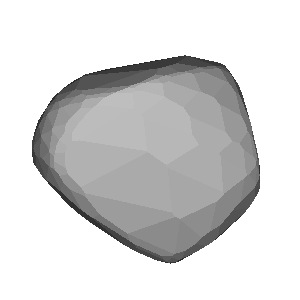2010-07-04 / TYC 6295-01378-1 / (1107) Lictoria
| # | OBS | Observer | Occ | Meth. | Instr. | CC | TSRC | UT1 | UT2 | UT3 | UT4 | UT2E | UT3E | Dur. | Chrd |
|---|---|---|---|---|---|---|---|---|---|---|---|---|---|---|---|
| 1 | show | Carles Schnabel | O+ | VID | M400 | ES | GPS++ | 23:22:00 | 23:24:12.77 | 23:24:17.56 | 23:26:00 | 0.02 | 0.02 | 4.79 | 70.9 |
| 2 | show | M. Bachini et al | O+ | CCD | M400 | IT | NTP | 23:23:19 | 23:23:22.90 | 23:23:28.61 | 23:23:49 | 0.1 | 0.1 | 5.71 | 84.5 |
| 3 | show | Roberto Di Luca | O+ | VID | M400 | IT | GPS++ | 23:20:00 | 23:23:20.18 | 23:23:25.58 | 23:25:00 | 0.12 | 0.12 | 5.40 | 79.9 |
| 4 | show | Oscar Canales | O- | VID | M203 | ES | 23:20:59 | 23:25:44 | |||||||
| 5 | show | Philippe Bernascolle | O- | VID | M280 | FR | 23:22:52 | 23:24:50 | |||||||
| 6 | show | Vitali Nevski | O- | CCD | M300 | BY | 23:21:39 | 23:22:19 |
6 observations found in db: euraster
Available (probably) matching predictions (click on the link to switch):| JPL#67 : 4391971a-f5e9-42d2-8c2d-8fbb9978843b [db: observed] |
Using prediction 4391971a-f5e9-42d2-8c2d-8fbb9978843b for map and profile fit
| Ellipse and circular profile fits to the timings (chords) |
|---|
|
|
Auto-Fit Result: Size = 98 x 47 km a',b' = 49.2, 23.6 km X0,Y0 = 1337.0, 23.0 km Mean diameter = 68 km From 3 chords (VID,CCD) You can enter space separated chord numbers (example: 11 4 8) or a method like VIS to ignore all visual timings, or a time source like RAD and NTP (but not GPS). If the plot disappears, then there are less than 2 chords left (too much ignored, go back with browser). Check SiMDA for size and mass data. Check Johnston Archive for satellites. |
Sky projection (artificial light) for occ. time: 2010-07-04, 23:23 UT (JD = 2455382.474)
| DAMIT | Q | P (h) | λ, β | JD0 | JD-JD0 | φ0 | Version | Modified | Vol-equiv D | Cmnt |
|---|---|---|---|---|---|---|---|---|---|---|
| # 3135 | 1.0 | 8.561 | 282°, 64° | 2.450895e6 | 4487.5 | 0.0° | None | 2019-09-26 | not scaled | 2019-05-07 |
| # 3136 | 1.0 | 8.561 | 96°, 52° | 2.450895e6 | 4487.5 | 0.0° | None | 2019-09-26 | not scaled | 2019-05-07 |


Image size: 300px. Transparent image background for copy & paste
| Map with groundtrack and observer stations |
|---|
| Event Details |
|---|
Occultation UUID [and DB] : 4391971a-f5e9-42d2-8c2d-8fbb9978843b [observed] Occultation Date + Time : 2010-07-04 at 23:24:40 UT +/- 0.01 min [1] Object Designation : (1107) Lictoria Orbit Class : MBA Star Designation : GDR3 4081245501412610176 Star Coordinates (ICRF) : RA = 19 10 17.1401, DE = -21 28 03.418 [2] Star Magnitudes : G = 10.67 mag, RP = 9.73 mag, BP = 11.6 mag Object Magnitude : V = 14.59 mag Estimated Magnitude Drop : 3.9 mag Estimated Max. Duration : 5.4 sec Object Mean Diameter : 79 km (src: astorb) Speed of the shadow : 14.8 km/s Elongation to Moon & Sun : 91° (sunlit = 47%), Sun = 176° Cross-track uncertainty : 0.3 mas = 0 km = 0.01 path-width (1-sig) RUWE and duplicate source : 0.92 mas, dup.src = 0 (0:false, 1:true) Ephemeris Reference : JPL#67 [1] time t0 of closest geocentric approach c/a, [2] including proper motion until t0 |
| More Data and Informations |
|---|
(If error 404: link not valid which means no data available)
| Aladin Sky Atlas |
|---|
| Aladin Lite direct link (has Gaia overlay) |